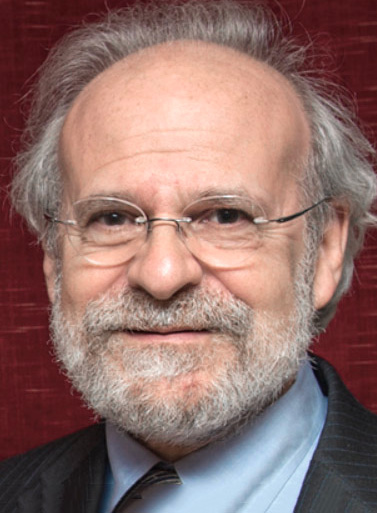

 There is no doubt that LTE is going to take a prime position in broadband developments. With competitively priced services, innovative smartphones and an increasing range of very innovative apps this market is set to continue to boom. So how will all this impact the overall broadband market? ...this is not an 'us or them' issue between fixed and mobile broadband. As a matter of fact, the companies that are rolling out LTE are increasingly dependent on deep fibre rollouts as they need to handle massive amounts of data, to which the mobile infrastructure technology is not well-suited. more
There is no doubt that LTE is going to take a prime position in broadband developments. With competitively priced services, innovative smartphones and an increasing range of very innovative apps this market is set to continue to boom. So how will all this impact the overall broadband market? ...this is not an 'us or them' issue between fixed and mobile broadband. As a matter of fact, the companies that are rolling out LTE are increasingly dependent on deep fibre rollouts as they need to handle massive amounts of data, to which the mobile infrastructure technology is not well-suited. more
 People are increasingly becoming aware of the emerging 'internet monopoly'. Companies such as Google, Facebook, Twitter and many the other (local) social network and media sites are becoming so large and powerful that they can dictate the use of their services in such a way that people lose control over their own information and their participation in these networks. ... These digital media developments certainly did happen, but they are not founded on the 'permission-based' principles that we advocated during all those years. more
People are increasingly becoming aware of the emerging 'internet monopoly'. Companies such as Google, Facebook, Twitter and many the other (local) social network and media sites are becoming so large and powerful that they can dictate the use of their services in such a way that people lose control over their own information and their participation in these networks. ... These digital media developments certainly did happen, but they are not founded on the 'permission-based' principles that we advocated during all those years. more
 One of the key factors in the transformation of the telecommunications industry was the fact that, thanks to the internet, end-users were suddenly able to become active participants in generating content for both private and public use. Companies such as Google, Amazon, eBay, Skype and Apple, followed by a number of national and international social media companies, all became involved in these new developments, and they became the great game-changers of the industry. Telecoms companies were caught off guard... more
One of the key factors in the transformation of the telecommunications industry was the fact that, thanks to the internet, end-users were suddenly able to become active participants in generating content for both private and public use. Companies such as Google, Amazon, eBay, Skype and Apple, followed by a number of national and international social media companies, all became involved in these new developments, and they became the great game-changers of the industry. Telecoms companies were caught off guard... more
 The market for cloud computing is getting more interesting every day. There is still a long way to go, as the success of cloud computing depends not only on high-speed networks, but also on capacity, robustness, affordability, low latency, ubiquity, security, privacy and reliability. Of course, the ideal infrastructure would be nationwide FttH networks, but obviously we can't wait for that... more
The market for cloud computing is getting more interesting every day. There is still a long way to go, as the success of cloud computing depends not only on high-speed networks, but also on capacity, robustness, affordability, low latency, ubiquity, security, privacy and reliability. Of course, the ideal infrastructure would be nationwide FttH networks, but obviously we can't wait for that... more
Global eSIM connections are projected to reach 4.9 billion by 2030, driven by China's rapid adoption, new provisioning standards, and growing demand across smartphones, industrial devices, and the expanding Internet of Things ecosystem. more
A new IETF draft outlines critical limitations of DNS in supporting the Internet of Autonomous Things, highlighting challenges related to latency, mobility, security, and privacy, and proposing architectural improvements to meet evolving machine-driven demands. more
A record-shattering DDoS attack peaking at 22.2 Tbps signals a new era of cyber aggression, driven by weaponized IoT botnets and raising urgent questions about global internet resilience. more
Today UK's new consumer protection laws against hacking and cyber-attacks officially take effect. This legislation, a global first, mandates that all internet-connected smart devices - from smartphones and game consoles to connected refrigerators - meet stringent security standards. more
 For four days in Southern France, cybersecurity experts from a broad array of different countries and sectors gathered for the annual ETSI Security Conference. The event undertaken by one of the world's major industry information-communication (ICT) standards organisations was intended to take stock of the state of cybersecurity and trends. more
For four days in Southern France, cybersecurity experts from a broad array of different countries and sectors gathered for the annual ETSI Security Conference. The event undertaken by one of the world's major industry information-communication (ICT) standards organisations was intended to take stock of the state of cybersecurity and trends. more
 Several weeks ago, the Federal Communications Commission (FCC) embarked on one of the most far-reaching regulatory gambits in its 90-year history. It is formally known as a Notice of Proposed Rulemaking in the matter of Cybersecurity Labeling for Internet of Things, Docket 23 -- 239. The FCC offers ICT product developers the use of its FCC trademarked cyber trust mark placed on their products in exchange for accepting open-ended Commission cybersecurity jurisdiction... more
Several weeks ago, the Federal Communications Commission (FCC) embarked on one of the most far-reaching regulatory gambits in its 90-year history. It is formally known as a Notice of Proposed Rulemaking in the matter of Cybersecurity Labeling for Internet of Things, Docket 23 -- 239. The FCC offers ICT product developers the use of its FCC trademarked cyber trust mark placed on their products in exchange for accepting open-ended Commission cybersecurity jurisdiction... more
 The Australian Signals Directorate (ASD) has issued a new set of guidelines warning about the security risks posed by the use of 5G technology in so-called Smart Cities. The ASD's concerns align with those of the Five Eyes security alliance, which has warned that the interconnected nature of a fully connected city makes it vulnerable to cyberattacks. more
The Australian Signals Directorate (ASD) has issued a new set of guidelines warning about the security risks posed by the use of 5G technology in so-called Smart Cities. The ASD's concerns align with those of the Five Eyes security alliance, which has warned that the interconnected nature of a fully connected city makes it vulnerable to cyberattacks. more
 Anybody that uses more than one brand of Internet of Things (IoT) device in the home understands that there is no standard way to connect to these devices. Each manufacturer chooses from a range of different protocols to communicate with and control its devices, such as BLE, LoRa, LTE-M, NB-IoT, SigFox, ZigBee, and others. more
Anybody that uses more than one brand of Internet of Things (IoT) device in the home understands that there is no standard way to connect to these devices. Each manufacturer chooses from a range of different protocols to communicate with and control its devices, such as BLE, LoRa, LTE-M, NB-IoT, SigFox, ZigBee, and others. more
 In a recent blog post, Amazon invited developers to test drive its gigantic IoT network. This network has been labeled 'Sidewalk' and was created by tying together all of Amazon's wireless devices like Amazon Echos and Ring cameras. Amazon claims this huge wireless network now covers 90% of U.S. households. Amazon created the network by transmitting Bluetooth and 900 MHz LoRa signals from its various devices. more
In a recent blog post, Amazon invited developers to test drive its gigantic IoT network. This network has been labeled 'Sidewalk' and was created by tying together all of Amazon's wireless devices like Amazon Echos and Ring cameras. Amazon claims this huge wireless network now covers 90% of U.S. households. Amazon created the network by transmitting Bluetooth and 900 MHz LoRa signals from its various devices. more
 OARC held its fall meeting in Belgrade on October 22 and 23. Here are my impressions of some of the presentations from that meeting... UI, UX, and the Registry/Registrar Landscape - One of the major reforms introduced by ICANN in the world of DNS name management was the separation of registry and registrar functions. The intent was to introduce competition into the landscape by allowing multiple registries to enter names into a common registry. more
OARC held its fall meeting in Belgrade on October 22 and 23. Here are my impressions of some of the presentations from that meeting... UI, UX, and the Registry/Registrar Landscape - One of the major reforms introduced by ICANN in the world of DNS name management was the separation of registry and registrar functions. The intent was to introduce competition into the landscape by allowing multiple registries to enter names into a common registry. more
 The Internet hints at the much larger possibilities of open connectivity in enabling discoveries such as the web but for the physical world. The ideas themselves go to a deeper level of thinking about how we build systems and how we can enable the future. This post is aimed at people building systems and devices which can be interconnected to create systems and meta-devices. more
The Internet hints at the much larger possibilities of open connectivity in enabling discoveries such as the web but for the physical world. The ideas themselves go to a deeper level of thinking about how we build systems and how we can enable the future. This post is aimed at people building systems and devices which can be interconnected to create systems and meta-devices. more